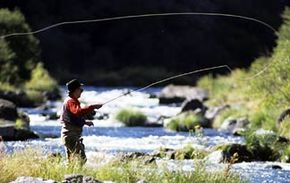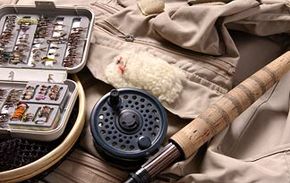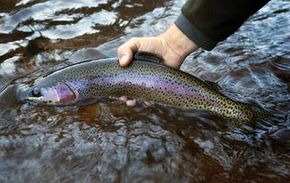PROFILE OF A FLY FISHERMAN
If you've ever watched a fly fisherman wade into the river and begin to dance his glinting line above the rushing water, you've probably developed an envy of his art -- not to mention his gear. Something about those waders, which make it possible for him walk around in a rushing stream without getting wet, and his fishing vest pregnant with tools and flies suggest fishing prowess.
The fly fisherman's challenge is simple: to trick a fish into believing his artificial fly, whipping around at the end of his fishing line above the water, is in fact a flying insect. What sets fly fishing apart from other types of fishing is that the line is actually heavier than the fly. Usually, the weight of the bait or the lure at the end of the line carries the line out over and into the water. But fly fisherman count on the line to carry out the light-weight fly. And the line must move in a way that creates the illusion of a flying insect -- for example, a mayfly.
Advertisement
The flies used for fly fishing are usually crafted with more detail than the basic lure -- to make them seem even more believable to the fish. And, in fact, creating or meticulously choosing the proper fly is part of the allure and addiction of fly fishing. Dancing your line above the water takes skill, as well. One author of a fly fishing book compared learning how to fly fish to learning how to swing a golf club or a tennis racket. It's something that you learn and then continue to perfect over a period of years or even a lifetime.
Advertisement


